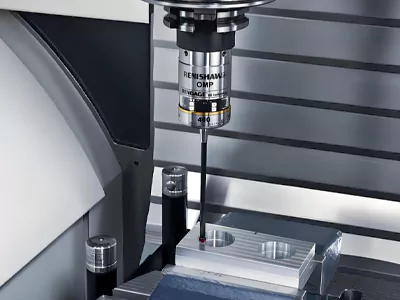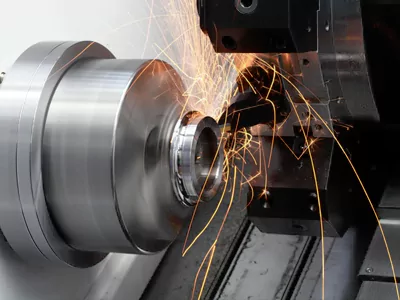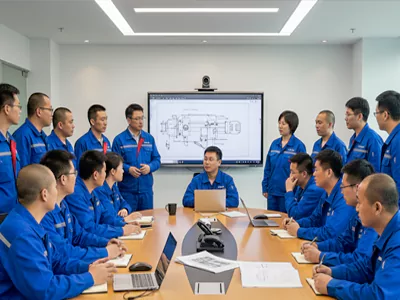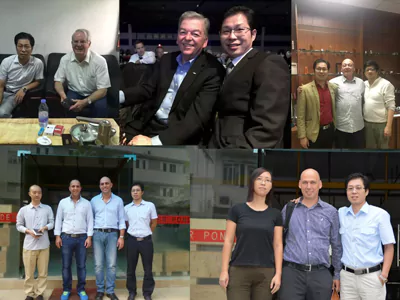Cell Phone Body Processing
From Raw Metal to Flawless Finish: Engineering the Future of Smart Devices
What is Cell Phone Body Processing?
In an era where smartphones are defined by their performance, durability, and aesthetics, the chassis—or body—is more than just a protective shell. It’s a marvel of modern engineering. With every new release, such as the recently announced iPhone 17 with its “Heat-forged aluminum unibody design,” the manufacturing processes become increasingly sophisticated.
So, what is cell phone body processing?
From a manufacturing perspective, it is a multi-stage, precision-driven journey that transforms a raw block of metal into a lightweight, durable, and flawlessly finished unibody chassis. This process is a symphony of advanced metallurgical and mechanical techniques.
The core stages of Cell Phone Body Processing
Stage 1: Forging & Billet Creation (The Foundation of Strength)
It all begins with a custom-formulated, high-purity metal alloy, typically aerospace-grade aluminum or titanium. Instead of starting with a simple extruded block, advanced techniques like heat-forging are employed.
- Heat-Forging: A billet of metal is heated to a precise temperature and then pressed into a rough shape (a “near-net shape”) under immense pressure. This process is key to the benefits described for the new iPhone.
- Enhanced Strength: Forging aligns and refines the metal’s grain structure, eliminating internal defects and creating a molecular structure that is significantly stronger and more impact-resistant than casting or simple machining.
- Improved Thermal Conductivity: The dense, uniform grain structure is also more efficient at dissipating heat—a critical feature for housing powerful processors.
This forged blank becomes the perfect starting point for the next stage, already possessing superior material properties.
Stage 2: CNC Machining (The Definition of Precision)
This is where the forged blank is meticulously sculpted into its final form. CNC (Computer Numerical Control) machining is a subtractive process where computer-controlled cutting tools carve away material with microscopic precision.
- Weight Optimization: Every gram of non-essential material is removed from the inside without compromising structural integrity, achieving the perfect balance of strength and lightness.
- Unibody Carving: The process can involve dozens of different tools and take over an hour for a single chassis. The machine carves out the interior to create space for components like the battery, logic board, and cameras.
- Intricate Features: It precisely drills speaker holes, mills the antenna channels (which are later filled with polymer), and creates the openings for buttons, ports, and the camera array.
Stage 3: Surface Finishing & Anodizing (The Touch of Perfection)
A raw machined body is functional, but it lacks the aesthetic and tactile perfection consumers expect. The final stages are all about creating a beautiful and resilient surface.
- Polishing & Sandblasting: The chassis undergoes a series of polishing and blasting steps using microscopic beads (like sand, glass, or ceramic) to create a smooth, uniform, and often matte texture that feels premium to the touch and resists fingerprints.
- Anodizing: This is a crucial electrochemical process for aluminum. The chassis is submerged in an electrolyte bath and an electric current is passed through it. This creates a hard, durable, and corrosion-resistant layer of aluminum oxide on the surface.
- Durability: The anodized layer is significantly harder than the raw aluminum, providing excellent scratch resistance.
- Color: The porous nature of the oxide layer allows it to be infused with dyes, resulting in the vibrant and consistent colors of the final product.
From a forged, high-strength blank to a precisely machined unibody, and finally to a beautifully anodized finish, the journey of creating a smartphone body is a testament to the power of advanced manufacturing. At our company, we possess the state-of-the-art equipment and deep expertise required to execute these very processes, turning innovative designs into tangible, high-quality products that define the future of technology.
The Rationale Behind the Three-Stage Process
Why is such a complex, multi-stage process involving forging, CNC machining, and anodizing necessary for a phone body? Couldn’t a simpler, faster method be used?
That’s an excellent question, and it gets to the heart of what defines a premium product. While simpler methods like stamping or casting exist, they cannot simultaneously achieve the trifecta of strength, precision, and aesthetic perfection that modern high-end devices demand. Each of our three core stages is a deliberate choice to solve a specific challenge:
1. Why Forging? For Foundational Strength and Performance.
A phone’s life is demanding. It needs to survive drops, resist bending, and dissipate heat from its powerful processor. Starting with a simple block of metal isn’t enough. Heat-forging is like genetic engineering for metal; it fundamentally improves the material’s internal structure. It creates a dense, uniform grain that makes the chassis incredibly strong and enhances its thermal conductivity. This initial step ensures we are building on the most robust and reliable foundation possible. Without it, the device would be more fragile and prone to overheating.
2. Why CNC Machining? For Uncompromising Precision.
A unibody chassis is a single, intricate component with no room for error. The internal cavities for the battery and electronics, the placement of buttons, and the ultra-thin walls must be accurate to the micron level. Simpler methods cannot achieve this. CNC machining is the only process that can meticulously carve a complex, three-dimensional shape from a solid block with absolute precision. It allows for the creation of sophisticated, lightweight designs that are structurally optimized—something impossible with casting or stamping. It is the necessary bridge between a strong blank and a functional, intricate design.
3. Why Anodizing & Finishing? For Durability and a Perfect Finish.
A precisely machined part is functional, but it’s not finished. It’s vulnerable to scratches, corrosion, and lacks the color and feel that consumers expect. The final surface finishing and anodizing stages are not merely cosmetic. They create a hard, ceramic-like protective layer on the aluminum that is highly resistant to scratches and wear. This process also allows us to infuse the metal with rich, consistent color. In essence, this final step provides the essential resilience for daily use and transforms a functional component into a beautiful, tactile object.
In summary, these three stages form an inseparable chain. Forging provides the strength, CNC provides the precision, and Anodizing provides the beauty and durability. To remove any one step would be to compromise the entire integrity of the final product.
Our Core Services
How We Bring Your Designs to Life: Our Core Capabilities
Understanding the process is one thing; mastering it is another. We provide end-to-end manufacturing solutions that correspond directly to these critical stages.
Custom Forging & Material Expertise
The foundation of any great product is the material. We don’t just process metal; we understand its science. We partner with you to select the optimal aluminum, titanium, or custom alloy and utilize advanced forging techniques to create blanks with superior strength and thermal properties, setting the stage for a perfect final product.
High-Precision CNC Machining
This is where your vision takes shape. Our state-of-the-art facility is equipped with multi-axis (3, 4, and 5-axis) CNC machining centers capable of achieving micron-level tolerances. From rapid prototyping to high-volume mass production, we transform forged blanks into intricate, lightweight, and perfectly dimensioned components.
Advanced Surface Finishing
The final touch defines the user experience. We offer a comprehensive suite of surface finishing services, including polishing, sandblasting, and Type II & Type III anodizing. Our rigorous quality control ensures perfect color consistency, exceptional durability, and the premium tactile feel your customers demand.
Why Partner With AFI Industrial?
Your Strategic Manufacturing Partner

Uncompromising Quality
ISO-certified processes and rigorous inspection at every stage.

Advanced Technology
Continuous investment in the latest forging, CNC, and finishing equipment.

Deep Expertise
A team of engineers and technicians with decades of experience in consumer electronics.

Collaborative Partnership
We work as an extension of your team, from design for manufacturability (DFM) to final delivery.
Ready to Build the Future?
Let’s discuss how our precision manufacturing capabilities can bring your next groundbreaking product to life.

